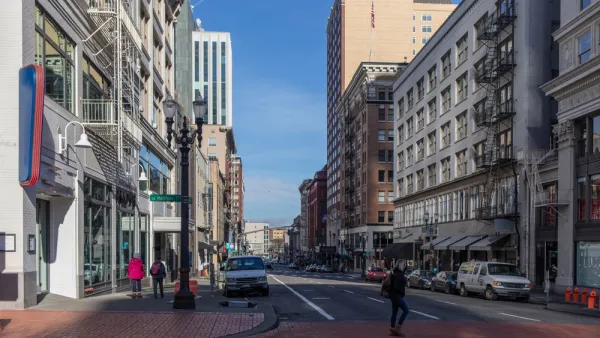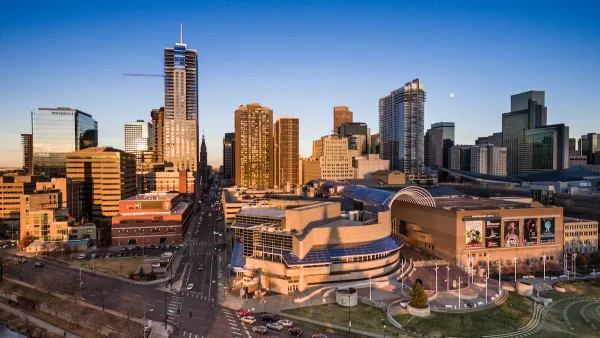Pedestrian deaths reached a four-decade high last year, signaling the failure of Vision Zero policies in most U.S. cities.

Estimates of nationwide pedestrian deaths by the Governors Highway Safety Association indicate that “U.S. walkers will have experienced a stunning 77-percent increase in deaths since 2010, rising at a rate more than three times faster than the rest of the traveling public, for whom fatalities increased 25 percent over the same period,” according to a Streetsblog article by Kea Wilson.
Planetizen readers should be all too familiar with this refrain. In 2021, U.S. pedestrian deaths broke the previous 40-year record, while 2020 saw the highest number of deaths in three decades. “In all three years, the GHSA noted that large arterials designed to prioritize vehicle speed, large vehicles, and dark road conditions were disproportionately common factors in fatalities — and in the absence of urgent action to address those systemic factors, safety officials are begging drivers themselves to be more careful.”
The findings come as the National Highway Traffic Safety Administration (NHTSA) is working to revise its vehicle safety rules to include a focus on pedestrian safety. So far, the agency has proposed adding a pedestrian safety rating to vehicles and instituting an Automatic Emergency Braking rule. Wilson notes that this rule doesn’t include “important companion technology like Intelligent Speed Assist systems that would prevent vehicles from reaching the deadly velocities at which braking systems are no longer effective.”
There may be one bright spot outside of the GHSA report, Wilson adds: “according to new preliminary estimates from NHTSA released the day before, traffic fatalities actually fell by about 3.3 in the first quarter of 2023, compared to the same period the year prior.” Wilson notes that this number doesn’t break out pedestrian deaths.
FULL STORY: Pedestrian Deaths Set a Four-Decade Record in 2022 (Yes, Again)

National Parks Layoffs Will Cause Communities to Lose Billions
Thousands of essential park workers were laid off this week, just before the busy spring break season.

Retro-silient?: America’s First “Eco-burb,” The Woodlands Turns 50
A master-planned community north of Houston offers lessons on green infrastructure and resilient design, but falls short of its founder’s lofty affordability and walkability goals.

Delivering for America Plan Will Downgrade Mail Service in at Least 49.5 Percent of Zip Codes
Republican and Democrat lawmakers criticize the plan for its disproportionate negative impact on rural communities.

Test News Post 1
This is a summary

Test News Headline 46
Test for the image on the front page.

Balancing Bombs and Butterflies: How the National Guard Protects a Rare Species
The National Guard at Fort Indiantown Gap uses GIS technology and land management strategies to balance military training with conservation efforts, ensuring the survival of the rare eastern regal fritillary butterfly.
Urban Design for Planners 1: Software Tools
This six-course series explores essential urban design concepts using open source software and equips planners with the tools they need to participate fully in the urban design process.
Planning for Universal Design
Learn the tools for implementing Universal Design in planning regulations.
EMC Planning Group, Inc.
Planetizen
Planetizen
Mpact (formerly Rail~Volution)
Great Falls Development Authority, Inc.
HUDs Office of Policy Development and Research
NYU Wagner Graduate School of Public Service





























